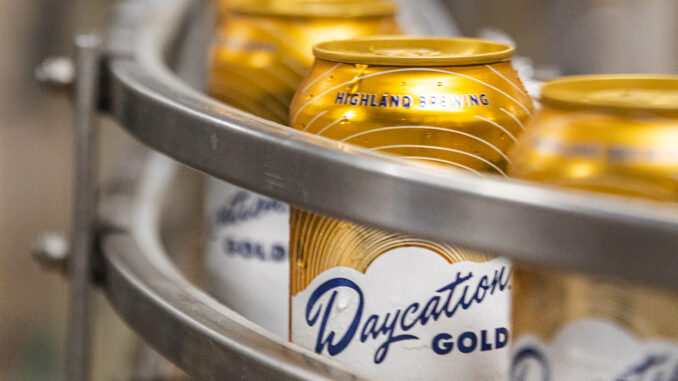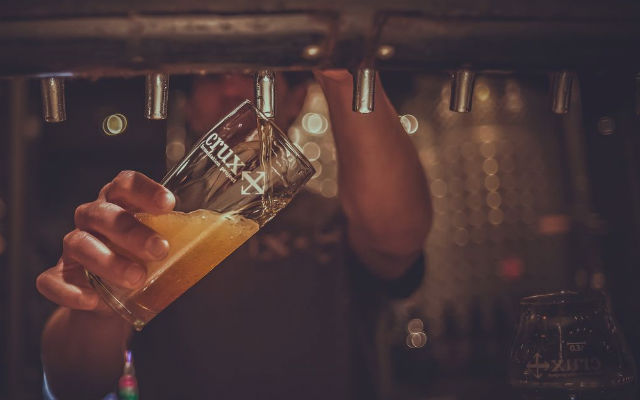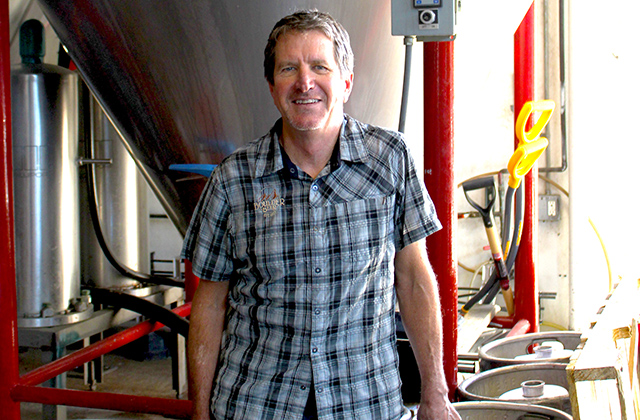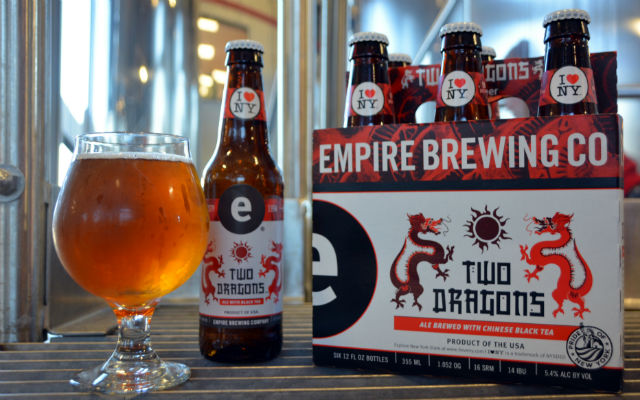
Exploring innovative strategies in packaging as a way to deepen brand engagement, meet evolving consumer preferences, and sharpen operational efficiency is a key to helping in creating sales.
Recent efforts reflect a shift in how breweries view packaging: not simply as a container, but as a platform for storytelling, occasion-based marketing, and long-term investment in quality and sustainability.
From enhanced visual design to major upgrades in technology, innovations are reshaping the way your beer is packaged and presented to your consumers.
Use Packaging as a Storytelling & Engagement Tool
For Untitled Art, its packaging is more than just a vessel — it serves as an introduction to the beer itself.
“We see it as the intersection of function, storytelling, and visual artistry,” said Isaac Showaki, founder of Untitled Art. “it’s the first handshake, the first impression, and often the first moment of discovery for our consumers.
“Every can is designed to both inform and inspire. To achieve this, we collaborate with talented artists to create unique, original artwork for each product, treating packaging as an extension of the liquid creativity inside.”
This approach to packaging extends to other breweries as well. Topa Topa uses regional color palettes in its packaging to evoke the local landscape, reflecting its mission to connect beer with place-based experiences.
“Our packaging design is critical to our storytelling, brand identity and consumer protection,” said founder and CEO Jack Dyer. “Other than the quality of the beer, we believe branding is one of the most important aspects of being a packaging brewery.”
Highland Brewing has taken a more tech-forward approach to packaging engagement.
Brewery Operations Director Russ Robertson noted that the company includes QR codes on variety packs, allowing customers to scan for real-time information about rotating selections.
“We are printing the name of the beer on the carton but also have a QR code that customers can scan to find out which beer is in the pack, as well as descriptions and tasting notes,” Robertson said. “The response has been positive,”.
Similarly, Saranac (FX Matt Brewing) has begun incorporating Flowcodes, an advanced form of QR code, into its new packaging. CEO Fred Matt said these interactive features help extend the customer experience beyond the shelf, linking to videos, behind-the-scenes content and promotional material.
“While they aren’t fully augmented reality yet, they’re a big step forward in creating interactive touchpoints that bring our brand’s story to life,” Matt said. “As we continue to evolve, we’re exploring even more immersive tech — including augmented reality elements — to elevate storytelling and consumer engagement in fun, unexpected ways.”
Flexible Formats and Occasion-Based Strategy
The rise of occasion-based packaging strategies has led breweries to adopt a wider range of sizes and configurations to match how and where consumers enjoy beer (see chart).
For Untitled Art, this meant introducing 24 oz cans for its Florida Seltzer line, targeting single-serve convenience store shoppers.
“This format meets the demand for single-serve, on-the-go beverages, especially for consumers looking for ‘one good drink’ to carry them through an evening,” Showaki said.
Highland Brewing also introduced 19.2oz cans to answer a growing demand for single-serve packaging, particularly in convenience store settings.
“We want to be on the shelf in the format that our consumer wants,” Robertson said.
Dust Bowl Brewing narrowed down its packaging strategy to optimize for performance across different channels.
“We are leaning in on 6pk / 12oz direct print for core, year-round brands, and find 16oz / 4pks are best for our specialty releases,” said Michelle Peterson, director of marketing and communications. Peterson also noted the growing importance of 12-pack mixed formats for chain accounts.
Topa Topa has taken a similar approach. The brewery launched its flagship Chief Peak IPA in 12-packs, rolled out multiple products in 19.2oz single-serve cans, and introduced a rotating hazy IPA series. It also debuted a mixed 6-pack series featuring single-hop IPAs.
“In 2025 we innovated with a new rotating hazy IPA series in 19.2 format called Good Good Hazy IPA Series,” Dyer said.
FX Matt also pivoted its strategy in response to consumer shifts. In 2021, 70% of the brewery’s business was in bottles. Today, it’s flipped — 70% of sales are in cans.
“The majority of our sales are 12-ounce, 6-packs and 12-packs. 12-packs are the real workhorse,” Matt said.
The company also introduced a 16oz 12-pack priced at 12oz 12-pack rates to help consumers facing financial pressure.
Packaging Format Breakdown and Strategic Uses
- 12oz 6-pack (direct print): Ideal for year-round core products, especially in chain retail where brand consistency and SKU simplicity are key.
- 16oz 4-pack: Often reserved for specialty or limited-release beers. Although more common now as a standard release. Gives brands more design surface and targets craft-focused buyers.
- 19.2oz single-serve: Tailored for convenience stores and on-the-go drinking occasions. Helps breweries tap into the impulse-buy market.
- 12oz 12-pack: Considered the workhorse format for volume sales, often used in grocery and chain retail. Strong value positioning.
- 16oz 12-pack (Value Pack): A budget-friendly offering with premium sizing. FX Matt uses this to help consumers stretch their dollar.
- 24oz single can: Designed for single-serve markets and often positioned as a one-and-done beverage. Florida Seltzer by Untitled Art leverages this format.
- Mixed Packs (12pk/6pk): Drive trial and seasonal excitement, especially in chains.
Investments in Sustainability and Quality Control
Several breweries that shared with Brewer Mag are also making forward-thinking investments in both sustainable packaging materials and quality assurance.
Topa Topa’s commitment to environmental values led to a switch from plastic PakTech holders to 100% compostable cartons. “The biggest innovation we have made is using carton materials that are 100% compostable,” Dyer said.
Quality control remains a cornerstone for all these breweries. Highland relies on a rigorous quality control sampling plan at multiple stages of packaging, checking everything from oxygen levels to seam integrity. The brewery has found strong returns from equipment like the Anton Paar CBox and PFD, which measure CO2 and O2 in-package.
READ MORE: Wearable Beer Packaging? The Genesis Behind This Genius Marketing Idea from Telluride
“We are not currently using oxygen scavenging can liners,” Robertson noted. “With proper undercover gassing on the can line, and jetter settings (correct fobs) on the bottle line, we are able to achieve very low total packaged oxygen.
“Our rigorous preventative maintenance schedule and execution by our production maintenance team ensures that our equipment is maintained in a like new condition and functioning as designed.”
Dust Bowl Brewmaster Don Oliver said their best ROI came from investing in a deaerated water skid.
“It is a huge quality improvement and saves money by allowing us to recover beer that was previously lost in the lines,” Oliver said.
To ensure quality control during packaging, Oliver said the Dust Bowl team will run an ATP swab testing on filler heads to help validate CIP processes and then push all lines and filler with deaerated water before filling starts and push the line at the end of the run.
“Periodically, we’ll pull samples during the run for DO, alcohol, carbonation and seam integrity checks,” he added, saying they check fill levels with gamma ray detection while running a full battery of micro tests, as well as incubate samples after packaging is complete.
The brewery also maintains an inventory of QA samples to reference in the future in the case that an issue arises — like a customer complaint, or other issues that come up.
Topa Topa also upgraded to a rotary canning line and purchased an inline carbonator to improve efficiency. “Those investments are worth their weight in gold,” Dyer said.
Saranac has taken a more comprehensive route, operating a full in-house lab and maintaining a daily tasting panel.
“We test our beers six times through the process and have a trained 10-person taste panel that meets every day at 11:30 a.m.,” Matt said. The brewery also brings in the former chief of quality from Anheuser-Busch to audit their processes.
While innovations differ in scope and philosophy, the common thread is clear: packaging is no longer an afterthought in brewing.
It is a strategic focal point for growth, differentiation, and trust-building in a competitive market. Whether through aesthetics, sustainability, or format agility, breweries are redefining the role of the can — from the production line to the consumer’s hand.





Be the first to comment